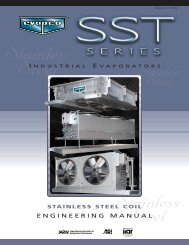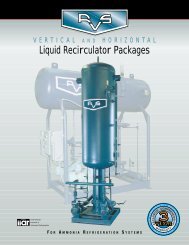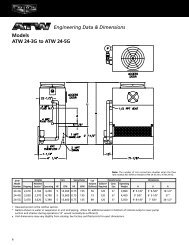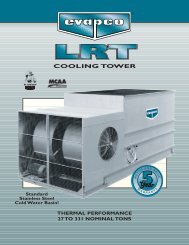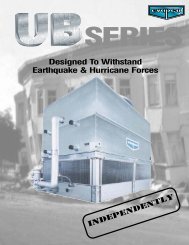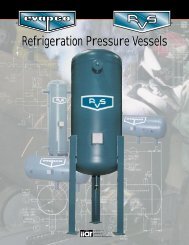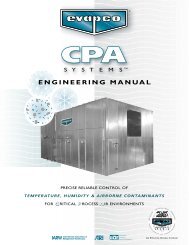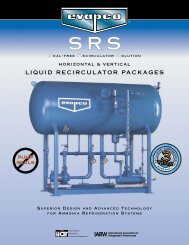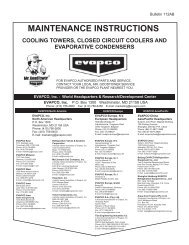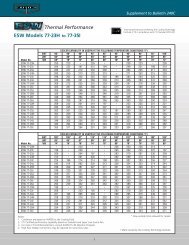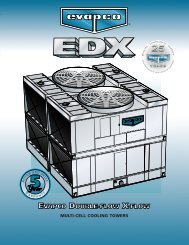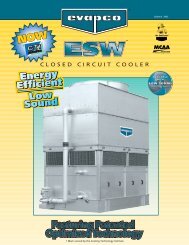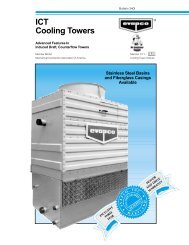You also want an ePaper? Increase the reach of your titles
YUMPU automatically turns print PDFs into web optimized ePapers that Google loves.
TWO CELL END INLET COOLING TOWERS<br />
IDEAL <strong>REP</strong>LACEMENT FOR CROSSFLOW UNITS<br />
MODELS <strong>REP</strong> 217-111 TO <strong>REP</strong> 224-920 / 367-1600 NOMINAL TONS<br />
LOW INSTALLATION COSTS - CONTRACTOR SAVINGS<br />
The <strong>REP</strong>’s fit tight enclosures and match up with crossflow layouts, piping, and steel, while still offering<br />
the maintenance and operational advantages of EVAPCO’s induced draft counterflow cooling towers.<br />
Layout Savings<br />
The <strong>REP</strong> counterflow method of heat transfer is the most efficient in the industry, resulting in a plan area up to 35%<br />
less than a comparable sized crossflow tower. The <strong>REP</strong>’s smaller plan area enables it to be located in smaller, less<br />
costly enclosures.<br />
<strong>REP</strong> units draw air from all four sides, so it is ideal for tight replacement projects. The <strong>REP</strong> can be placed close to a<br />
surrounding wall with little or no effect on unit capacity. The <strong>REP</strong> ’s are ideal for matching existing crossflow layouts.<br />
Piping Savings<br />
All piping connections are on one end, thereby reducing piping costs and installation time. Conventional doubleflow<br />
crossflow cooling towers require two water inlet connections per cell. The counterflow <strong>REP</strong> design requires only one<br />
inlet connection per cell, thereby significantly reducing the expensive piping, piping support and flow balancing<br />
valves required with the crossflow design. The pressurized water distribution system in <strong>REP</strong> units do not require flow<br />
balancing valves.<br />
Typical (2) Cell Crossflow Piping<br />
<strong>REP</strong> Simplified Piping<br />
Steel Savings<br />
The two cell <strong>REP</strong> units may be supported in two ways - see Option A and B below. In Option A, the two cells are supported<br />
by three steel “I” beams running the entire length of the units. In Option B, the two cells are supported by<br />
two steel “I” beams running across the width of the cells. Option B matches the typical crossflow supporting steel<br />
arrangement. This flexibility enables <strong>REP</strong> units to sit on the existing structural steel for most replacement projects,<br />
thereby resulting in lower installation costs.<br />
Option A<br />
Option B<br />
UNIT OUTLINE<br />
UNIT<br />
OUTLINE<br />
STRUCTURAL BEAM<br />
STRUCTURAL BEAM<br />
Operating Weight Savings<br />
The operating weight of <strong>REP</strong> units are approximately 35% less than conventional crossflow cooling towers. Due to<br />
the <strong>REP</strong> basin design and smaller plan area, less water is held in the unit during normal operation. Therefore, the<br />
structural support costs are reduced, and it is possible to locate the <strong>REP</strong> on a lighter roof, providing greater location<br />
flexibility.<br />
2



